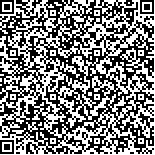下载中心
优秀审稿专家
优秀论文
相关链接
摘要

以北京市平原区为研究区域,利用北京1号卫星(Beijing-1)融合数据,研究了非正规垃圾场的影像特征,建立了非正规垃圾场在小卫星影像上的判读标志,通过人机交互和计算机自动检测方法对北京地区的非正规垃圾场进行了判读分析和变化检测试验研究.验证发现:利用Beijing-1小卫星的全色和多波段融合影像对非正规垃圾场的识别精度可达90.3%;由于非正规垃圾场影像特征的不确定性,计算机自动变化检测方法不能替代人机交互判读,但可提高人机交互识别变化的效率.
Due to urbanization increasing, the quantity of solidwastes inBeijing is increasing rapidly and leads to large numbers of informal solid wastes dumps. Solid wastes in these sites are usually dumped in the open air without certain environmental conservationmeasures, which influence the urban environment and human healthy badly.It is absolutely necessary tomonitor these dumps in order to take some effectivemeasurements to dispose them. Remote sensing technology can provide a rapid and effective way to identify and monitor the dumps, owning to its characteristics of objectivity, real-time and macro-scope view.With high spatial resolution, high frequency of revisiting and broad coverage range, Beijing-1M icrosatellite image is an importantdata source forurban environmentmonitoring. Taking the flatplain area ofBeijing as study site, this paper establishes the interpretation keys of informalopen-air solidwaste dumps through studying theircharacteristics based onBeijing-1fusion images. Via visual interpretation and automatic change detectionmethods, the authors studies the location and change of the open-air solidwaste dumps. Compared with the field investigation data, it shows high accuracy (about90.3% ) of the indoor visual interpretation result using Beijing-1 images. However, on accountof the uncertainty of the solidwaste dumps characteristics, automatic change detectionmethod can just be utilized to decrease thework ofvisual interpretation to find the location instead of replacing itcompletely.

